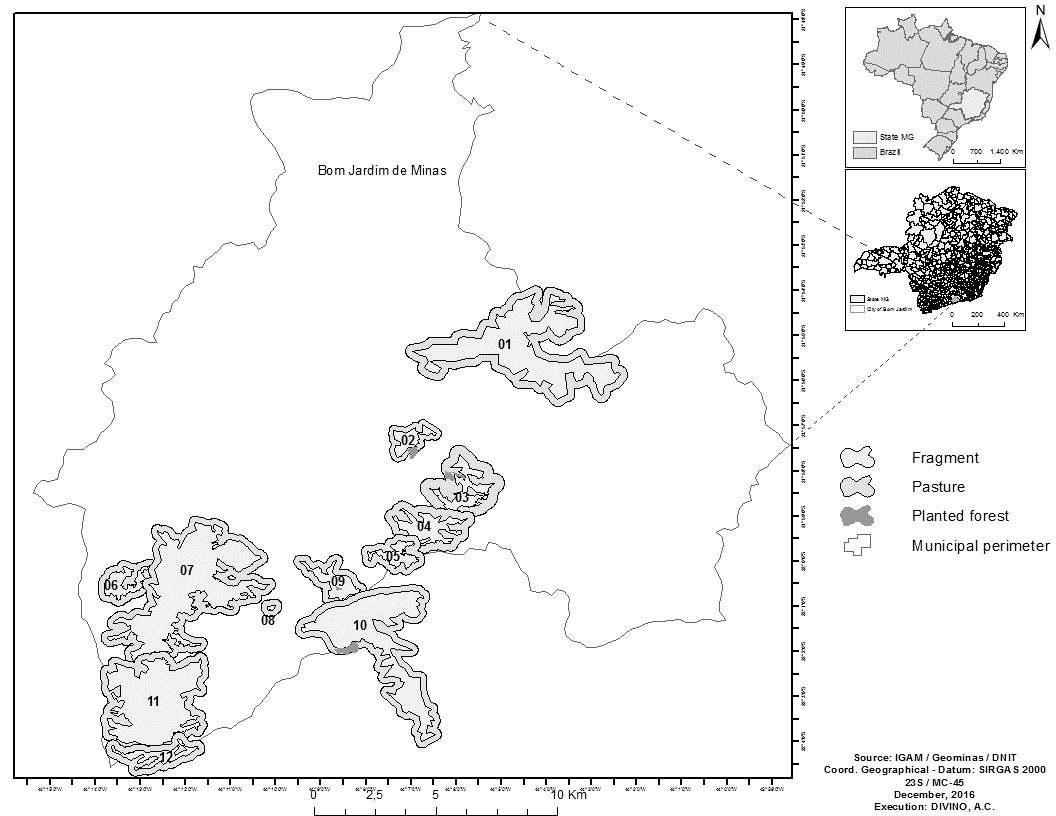Abstract:
Forest fragments in the state of Minas Gerais contain a large number of Bromeliaceae genera, whose cisterns accumulate water and organic matter, providing shelter and food for a wide range of organisms. However, these fragments often consist only of small patches of vegetation, making the species more vulnerable to the effects of this landscape changes. This study aimed to test the effect of the distance to the edge and of the matrix type on the structure of aquatic invertebrate communities in four morphospecies of bromeliads. Samples were collected in Atlantic Forest fragments adjacent to pasture and planted forest areas, in a region of Serra da Mantiqueira, Brazil. Of the 147 bromeliads investigated, we found 35 taxa, among which the most abundant groups were Ostracoda (4,962 individuals), Culicidae (2,358), Tanypodinae (1,164) and Scirtidae (1,043). The richness of taxa and Shannon diversity of invertebrates were similar at different distances from the edge, with variation of richness between 17 and 23 taxa and diversity between 1.25 and 1.52. The composition of the fauna in the cisterns changed between some collection sections (A vs. C, C vs. D and D vs. F), irrespective of being close to or far from the edge. There was no variation of richness (t=-1.145, df=106, p= 0.341) and diversity (t= 1.376, df= 106, p= 0.429) among samples collected from fragments next to planted forest and pasture, likely because the bromeliads studied were located on hillsides above the canopy of planted forests, and subject to similar conditions to those found in the fragments next to pastures. The results demonstrate the importance of bromeliads in maintaining the richness and diversity of the invertebrates they harbor, even in altered landscapes exposed to extreme conditions such as fragment edges.
Keywords:
Edge effect; phytotelma; invertebrates; remaining forest

 Thumbnail
Thumbnail
 Thumbnail
Thumbnail
 Thumbnail
Thumbnail


